OP: “Tone” by Shouta Aoi
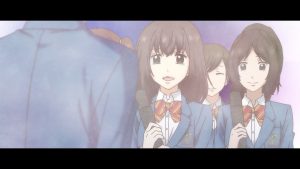 We’re in the midst of one of those days when it seems like most of my most highly-anticipated series premiere all at once, as seems to happen more and more often lately. It was a close call this season, with no clear standout and all of the other contenders having some qualifiers holding them back, but Kono Oto Tomare! was probably my top show going into the spring. Certainly there are others that had the chance (and still do, I believe) to be better, but none which were so likely to be at least really good.
We’re in the midst of one of those days when it seems like most of my most highly-anticipated series premiere all at once, as seems to happen more and more often lately. It was a close call this season, with no clear standout and all of the other contenders having some qualifiers holding them back, but Kono Oto Tomare! was probably my top show going into the spring. Certainly there are others that had the chance (and still do, I believe) to be better, but none which were so likely to be at least really good.
 As with Mix, Kono Oto Tomare is yet another adaptation of a manga I’ve been following for a long time. And as with Mix I was it seemed inevitable to me than an anime would happen – the manga sells very well (approaching 3 million volumes now), and it has all the ingredients to do well as anime (at least artistically). Some series we like more than our head tells us we objectively should, and some less – and for me, Tomare is definitely the former. I have a deep affection for this series, even though it sometimes drives me a bit nuts.
As with Mix, Kono Oto Tomare is yet another adaptation of a manga I’ve been following for a long time. And as with Mix I was it seemed inevitable to me than an anime would happen – the manga sells very well (approaching 3 million volumes now), and it has all the ingredients to do well as anime (at least artistically). Some series we like more than our head tells us we objectively should, and some less – and for me, Tomare is definitely the former. I have a deep affection for this series, even though it sometimes drives me a bit nuts.
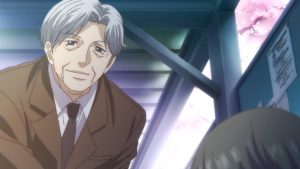 While it would be wrong to make too much of the comparison, I’ve always kind of felt that if Chihayafuru is a shoujo that’s published as a jousei but plays like a shounen, Kono Oto Tomare! is a shounen that plays a lot like a shoujo. And for me there is some kind of middle ground where Chihayafuru and this series meet. Between the look of the character designs and the general tone – not to mention the premise – Tomare has always put me in mind of Chihayafuru. But as I said, that comparison only goes so far, and the deeper you dig into it the more you realize this one is very much a different animal.
While it would be wrong to make too much of the comparison, I’ve always kind of felt that if Chihayafuru is a shoujo that’s published as a jousei but plays like a shounen, Kono Oto Tomare! is a shounen that plays a lot like a shoujo. And for me there is some kind of middle ground where Chihayafuru and this series meet. Between the look of the character designs and the general tone – not to mention the premise – Tomare has always put me in mind of Chihayafuru. But as I said, that comparison only goes so far, and the deeper you dig into it the more you realize this one is very much a different animal.
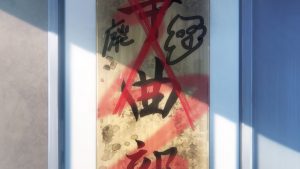 Kono Oto Tomare is the story of the Tokise High School koto club and the kids who provide its beating heart. Third-year Kurata Takezou (Enoki Junya) in an under-confident incoming president who’s inherited the club from his upperclassmen and is its only remaining member. First-year Kudou Chika (Uchida Yuuma – again) is a boy with a very bad reputation which precedes him, stemming from a life of crime in middle school culminating in a nasty incident at his grandfather’s house and koto workshop. There are plenty of other members to come, but we’ll get to them in time – the depth of strong characters is definitely one of this series’ most potent narrative weapons.
Kono Oto Tomare is the story of the Tokise High School koto club and the kids who provide its beating heart. Third-year Kurata Takezou (Enoki Junya) in an under-confident incoming president who’s inherited the club from his upperclassmen and is its only remaining member. First-year Kudou Chika (Uchida Yuuma – again) is a boy with a very bad reputation which precedes him, stemming from a life of crime in middle school culminating in a nasty incident at his grandfather’s house and koto workshop. There are plenty of other members to come, but we’ll get to them in time – the depth of strong characters is definitely one of this series’ most potent narrative weapons.
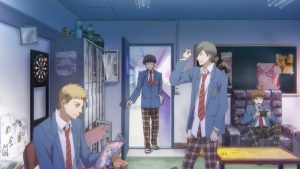 It isn’t immediately clear who the protagonist of this series is, and maybe it’s best to say both Takezou and Chika are – though I have my own feelings on that question (and it was clear to me who was originally the protagonist, and that it changed over time). For now it’s all good, as these two make a very good contrast – Kurata-kun is timid and plagued by self-doubt, and Chika all brashness and snarling defiance. But of course it’s a snarl that masks a lot of internal pain, which Takezou can’t see at first but eventually does with the help of Chika’s best friend Takaoka Tetsuki (Hosoya Yoshimasa, for once perfectly cast).
It isn’t immediately clear who the protagonist of this series is, and maybe it’s best to say both Takezou and Chika are – though I have my own feelings on that question (and it was clear to me who was originally the protagonist, and that it changed over time). For now it’s all good, as these two make a very good contrast – Kurata-kun is timid and plagued by self-doubt, and Chika all brashness and snarling defiance. But of course it’s a snarl that masks a lot of internal pain, which Takezou can’t see at first but eventually does with the help of Chika’s best friend Takaoka Tetsuki (Hosoya Yoshimasa, for once perfectly cast).
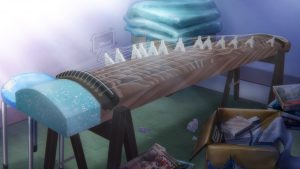 Just as Kimetsu no Yaiba makes its hay by executing one type of shounen very well rather than by breaking new ground, so it is with Kono Ono Tomare!. But this is a very different sort of shounen, obviously. We’ve seen these tropes many, many times – the club which will be shut down if it doesn’t get new members, the misunderstood delinquent, even the kindly kouchou-sensei with a connection to the club’s past. Yes, as with Kimetsu and Mix too, Kono Oto Tomare! will likely feel very familiar at times. But mangaka Sakura Amyuu has a deft hand with the material and she’s almost a genius when it comes to character and character dynamics. As well, this series just has unbelievable amounts of heart – heart which it very often wears on its sleeve (so don’t say I didn’t warn you).
Just as Kimetsu no Yaiba makes its hay by executing one type of shounen very well rather than by breaking new ground, so it is with Kono Ono Tomare!. But this is a very different sort of shounen, obviously. We’ve seen these tropes many, many times – the club which will be shut down if it doesn’t get new members, the misunderstood delinquent, even the kindly kouchou-sensei with a connection to the club’s past. Yes, as with Kimetsu and Mix too, Kono Oto Tomare! will likely feel very familiar at times. But mangaka Sakura Amyuu has a deft hand with the material and she’s almost a genius when it comes to character and character dynamics. As well, this series just has unbelievable amounts of heart – heart which it very often wears on its sleeve (so don’t say I didn’t warn you).
 There’s one other element that’s crucial to this series that I haven’t talked about, and that of course is the koto. As with Chihayafuru (and Hinomaru Zumou, and Kabukibu!, etc.) we have a series about a traditional Japanese cultural icon in club form. And as those series do, this one expertly paints a fascinating portrait of a subject most Westerners (like me) know little about. And this should be an area where Tomare can soar as an anime even more than as a manga, because we’ll be seeing the club’s koto performances (it’s hardly a spoiler to say they’re plot-critical) brought to life by actual performers. The early returns suggest it’s going to do very well in depicting those moments, and with two split cours to work with, Platinum Vision and director Mizuno Ryouma have enough time to give viewers a real sense of this ongoing story, and a natural stopping point to aim for. I’m not going to say Kono Oto Tomare! is the spring show with the highest potential, but I won’t be remotely surprised if it ends up being the one with the most rewarding results.
There’s one other element that’s crucial to this series that I haven’t talked about, and that of course is the koto. As with Chihayafuru (and Hinomaru Zumou, and Kabukibu!, etc.) we have a series about a traditional Japanese cultural icon in club form. And as those series do, this one expertly paints a fascinating portrait of a subject most Westerners (like me) know little about. And this should be an area where Tomare can soar as an anime even more than as a manga, because we’ll be seeing the club’s koto performances (it’s hardly a spoiler to say they’re plot-critical) brought to life by actual performers. The early returns suggest it’s going to do very well in depicting those moments, and with two split cours to work with, Platinum Vision and director Mizuno Ryouma have enough time to give viewers a real sense of this ongoing story, and a natural stopping point to aim for. I’m not going to say Kono Oto Tomare! is the spring show with the highest potential, but I won’t be remotely surprised if it ends up being the one with the most rewarding results.
ED: “Speechless” by Yuuma Uchida


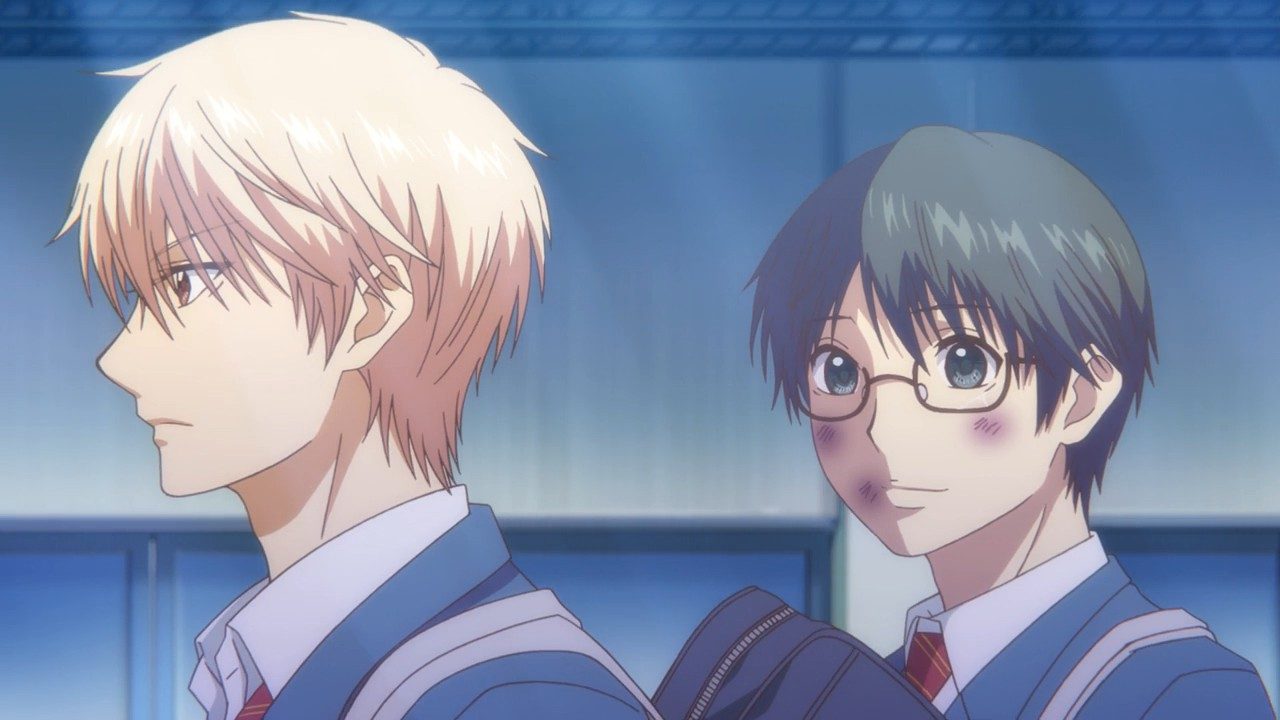

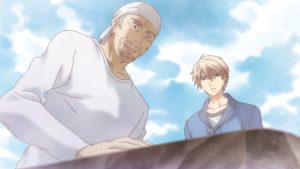
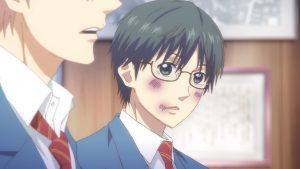
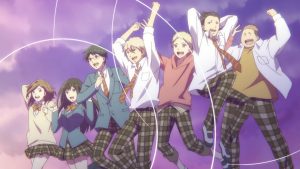





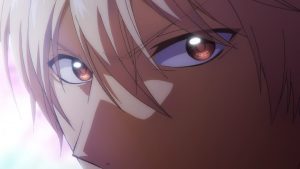
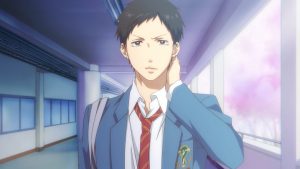
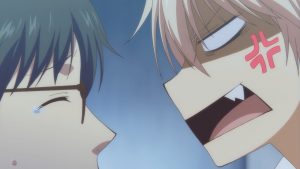
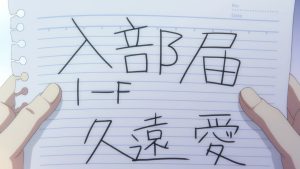

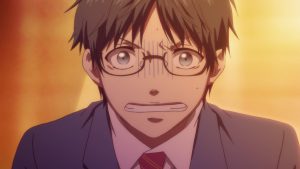

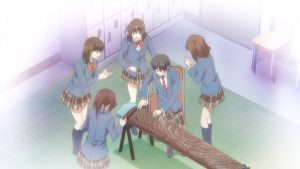
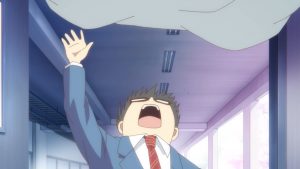
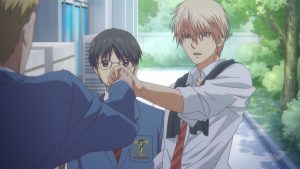
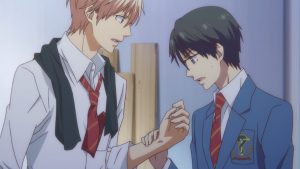
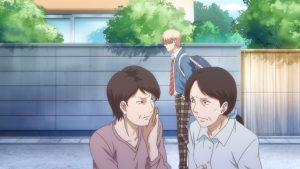


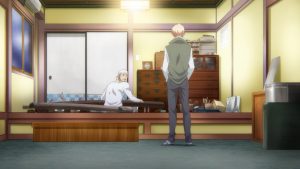
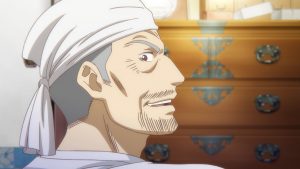
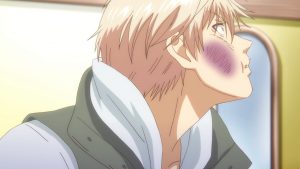
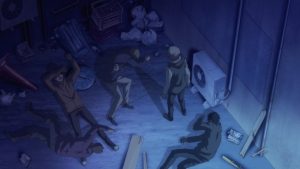
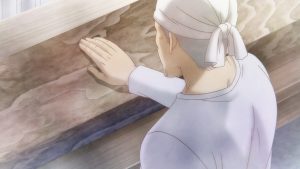

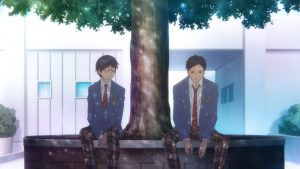
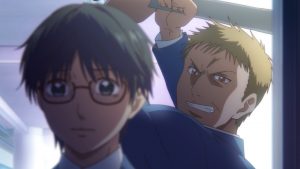
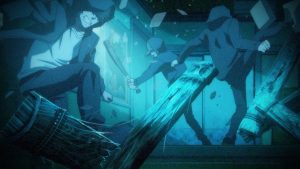
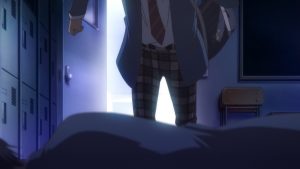


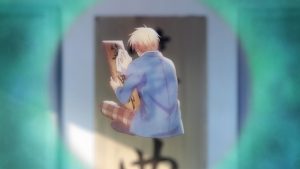
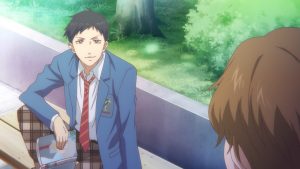
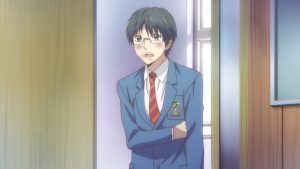
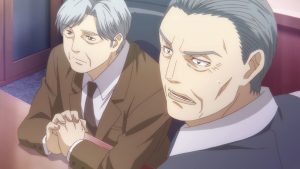

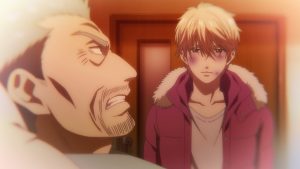


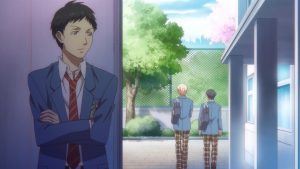

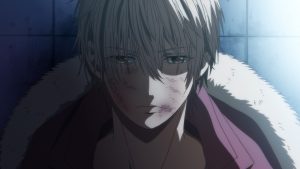

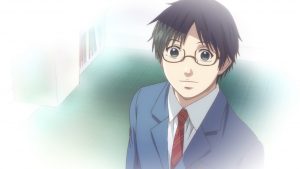
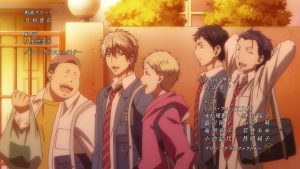

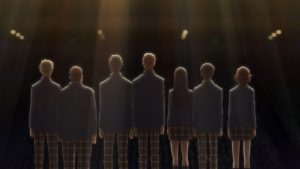

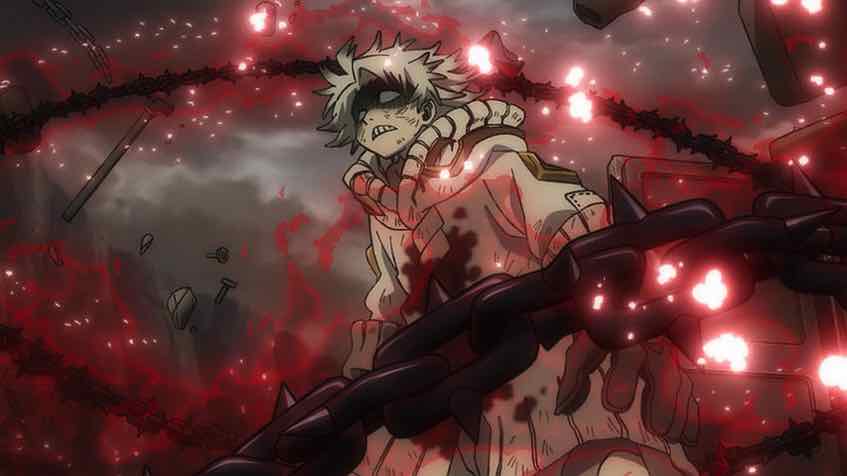
leongsh
April 7, 2019 at 10:26 pmMy view is that it started with 2 protagonists which would contrast and support each other – co-protagonists. Both needing each other for the koto club. Then the focus started to move towards one while the other sliding back. This is due to the main girl. While there is a second girl that came in later, the first pair advanced further and we are left with what we have now. But that’s for the manga.
For the anime adaptation, I am happy we have one. When it was announced, I was initially stunned, happy and then trepidation. Hoping that it gets a decent production. This first episode met that bar. Will it hold up for the rest of the run? I don’t know and I am crossing my fingers.
This first episode covered the near entirety of Chapter 1. If it holds this pace, it will reach the first natural stopping point i the manga.
karma
April 8, 2019 at 2:24 amIt was rather frustrating watching Takezou, because he was almost as bad with his jumping to conclusions as those policemen and vice-president. I heard that he gets better.
What can make or break this adaptation is how music will be presented. Will we have “talking heads”/a peanut gallery and visual effects to show us that music is good (like in ex. in “Your Lie in April”) or will studio let music “talk” (like in “Hibike! Euphonium”)? Time will tell, because the first episode offers no music at all.
Guardian Enzo
April 8, 2019 at 9:32 amYou heard he gets better? He gets better in the first episode.
karma
April 8, 2019 at 11:19 amThere would be no story without it, but one good deed doesn’t balance things. Did he apologize for being a complete asshole? No, instead he’s thanked and can feel like a hero just because he had done something that any decent person would do (and probably without such deliberation, especially after knowing Chika’s past).
I don’t intend to hate him, but he’s still not out of a self-digged hole. Kono Oto Tomare have to sell me this connection between two protagonists.
Guardian Enzo
April 8, 2019 at 11:35 amI like stories where characters aren’t fully formed at the beginning and actually grow. But that’s obviously out of fashion in anime these days.
karma
April 9, 2019 at 1:40 amI don’t know what’s with you and those passive-agressive jabs, but I won’t bite. I’ll just explain my stance once more.
It’s possible that one character rubs a viewer wrong from the start. Here we have Takezou, who seriously want to make his life easier by letting innocent boy be persecuted and probably ejected from the school (spoiler: it wouldn’t be easier; he’d indirectly destroy his senpais’ legacy, so he’s also pretty stupid/weak-minded). Sometimes we give such character chance (in ex. Hikari from “Nagi no Asakura” changed from worst character to best), sometimes we drop anime because of them (do I need to remind you about certain Haiji, which you compared to Trump and anime Hitler just because he was pushy and was inconveniencing students leading too good life to be true? Btw. second part was definitely in top 3 of winter cours).
Ronbb
April 8, 2019 at 3:05 amI had no idea that it’s a shounen, and I got the Chihayafuru vibe, too! Yes, to koto, and yes to a character-driven show…I’m in.
P.S. Wow, Uchida Yuuma is getting popular. It’s really me…somehow I thought it was Ishikawa Kaito when Uchida spoke his first couple of lines. This happened to me with Banana Fish. This wrong thought got cleared up quickly though, as Ishikawa, to me, has more depth, and can act better.
Guardian Enzo
April 8, 2019 at 9:31 amI actually thought of Okamoto Nobuhiko (who we actually haven’t been hearing much lately) at first. I agree Ishikawa is a more nuanced actor on the whole, but I think Uchida is basically decent and not a bad fit for Chika.
Ronbb
April 8, 2019 at 9:36 amAgreed. Uchida isn’t bad, and he can do Chika here.
JJ
April 8, 2019 at 4:31 amI’m not seeing any mechanical boxing aids in this series, so I’m not sure how “perfectly cast” Hosoya Yoshimasa actually is here.
Flippancy aside, chalk another one up for Chihayafuru vibes.
Guardian Enzo
April 8, 2019 at 9:32 amActors can be perfectly cast in more than one role, you know!
JJ
April 8, 2019 at 3:35 pmYeah, that’s fair. Thanks for not taking the joke too seriously as well.
Having re-watched the episode, I’m surprised at how much I like the lead pair already. On paper (pun unintended) it sounds rather cliched but the dynamic worked well here. If this is the deft characterisation you mentioned then it’s already working.
Guardian Enzo
April 8, 2019 at 4:28 pmIt really kicks in when the supporting cast is layered in. As with Chihayafuru the secondary characters (and there’s actually a third protagonist here, too, as you can guess from the promo materials and OP/ED) add tremendously to the overall mix.